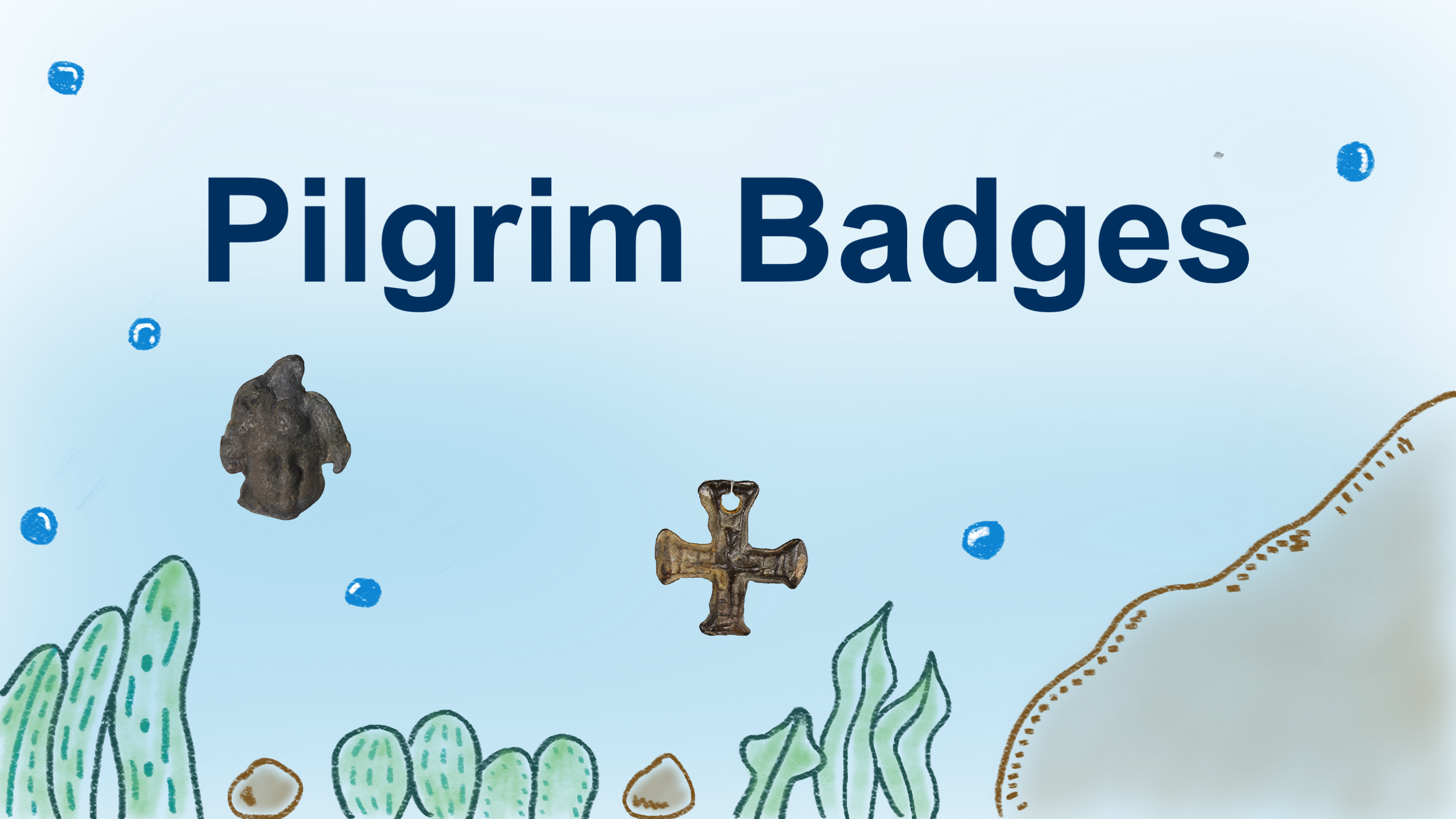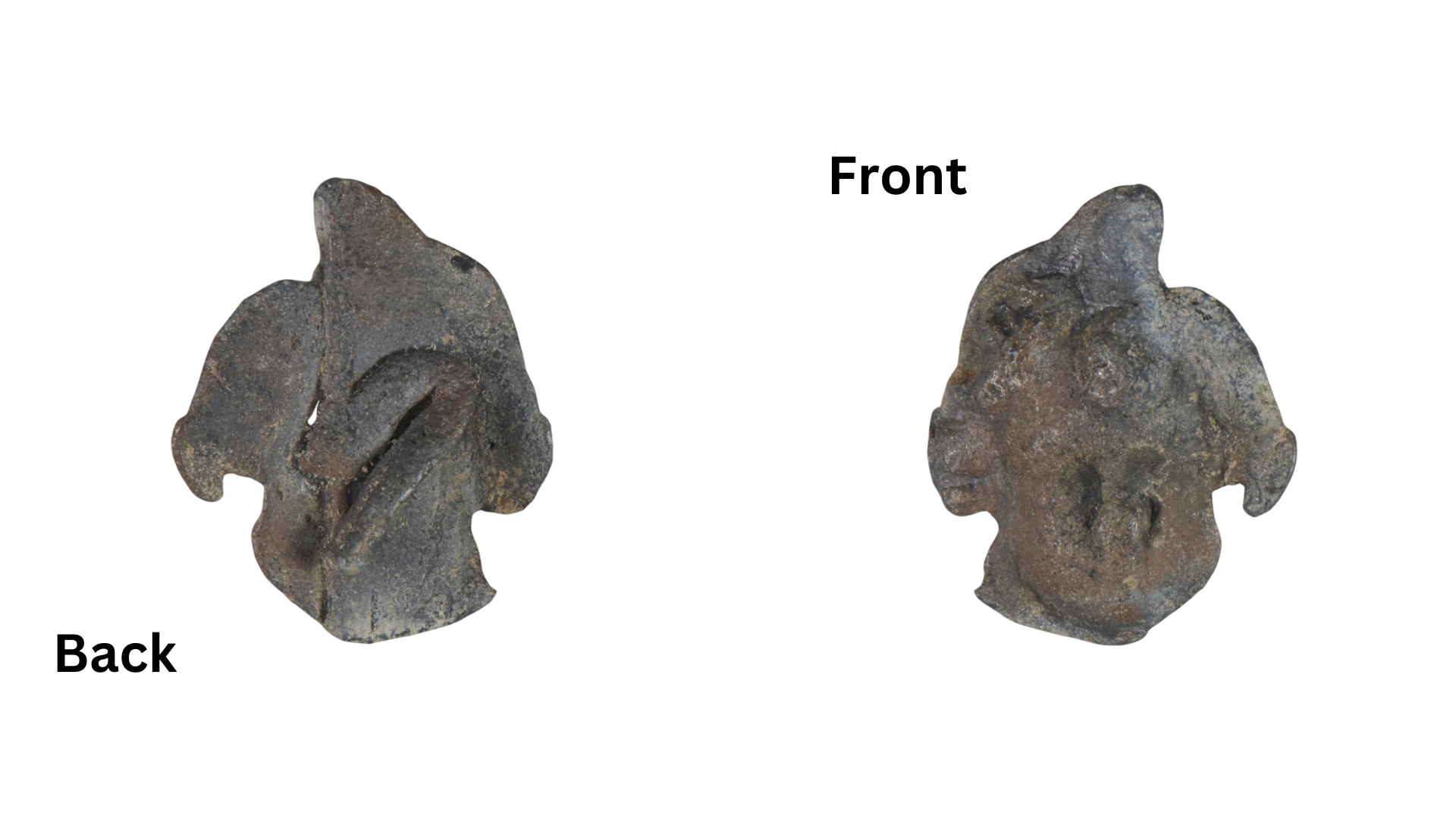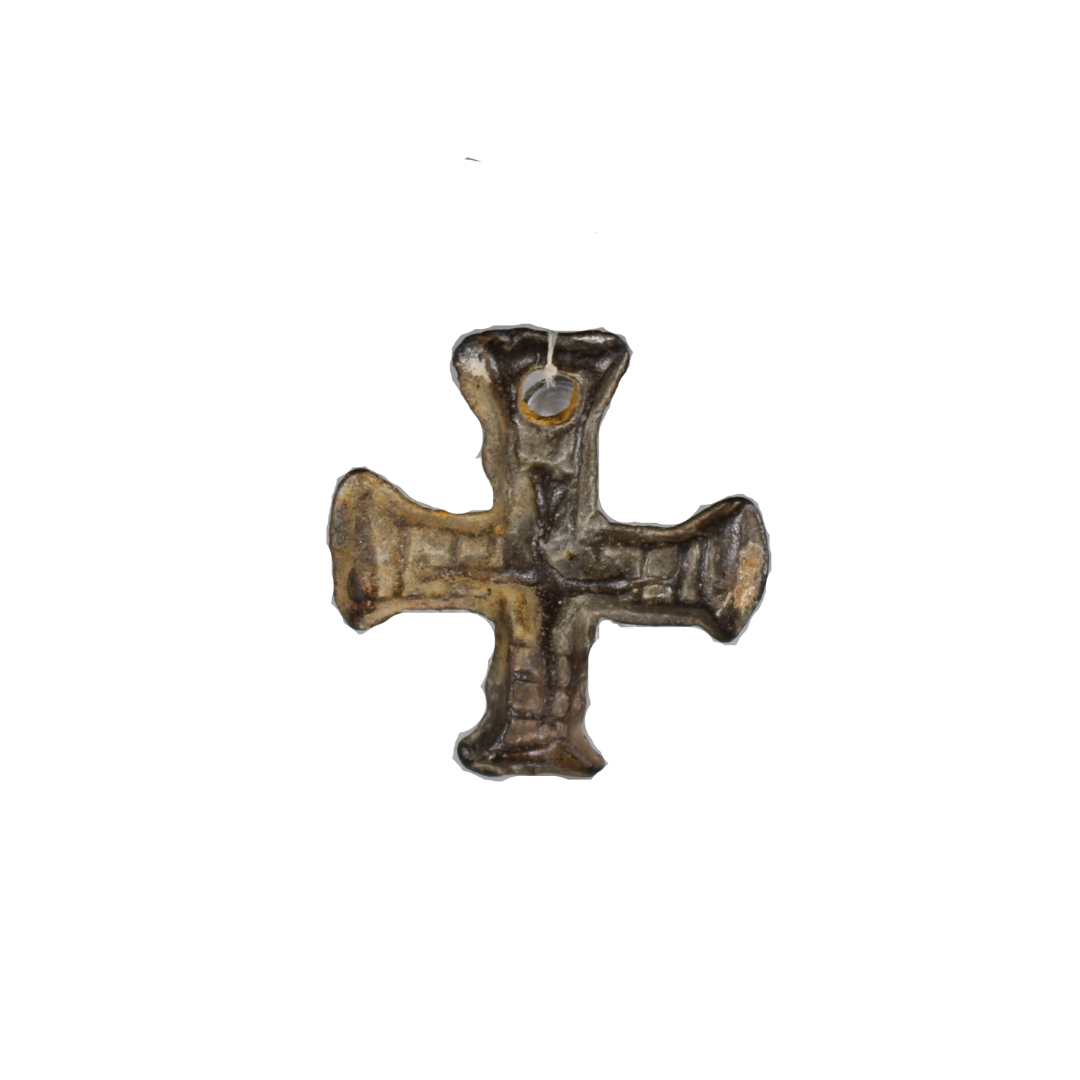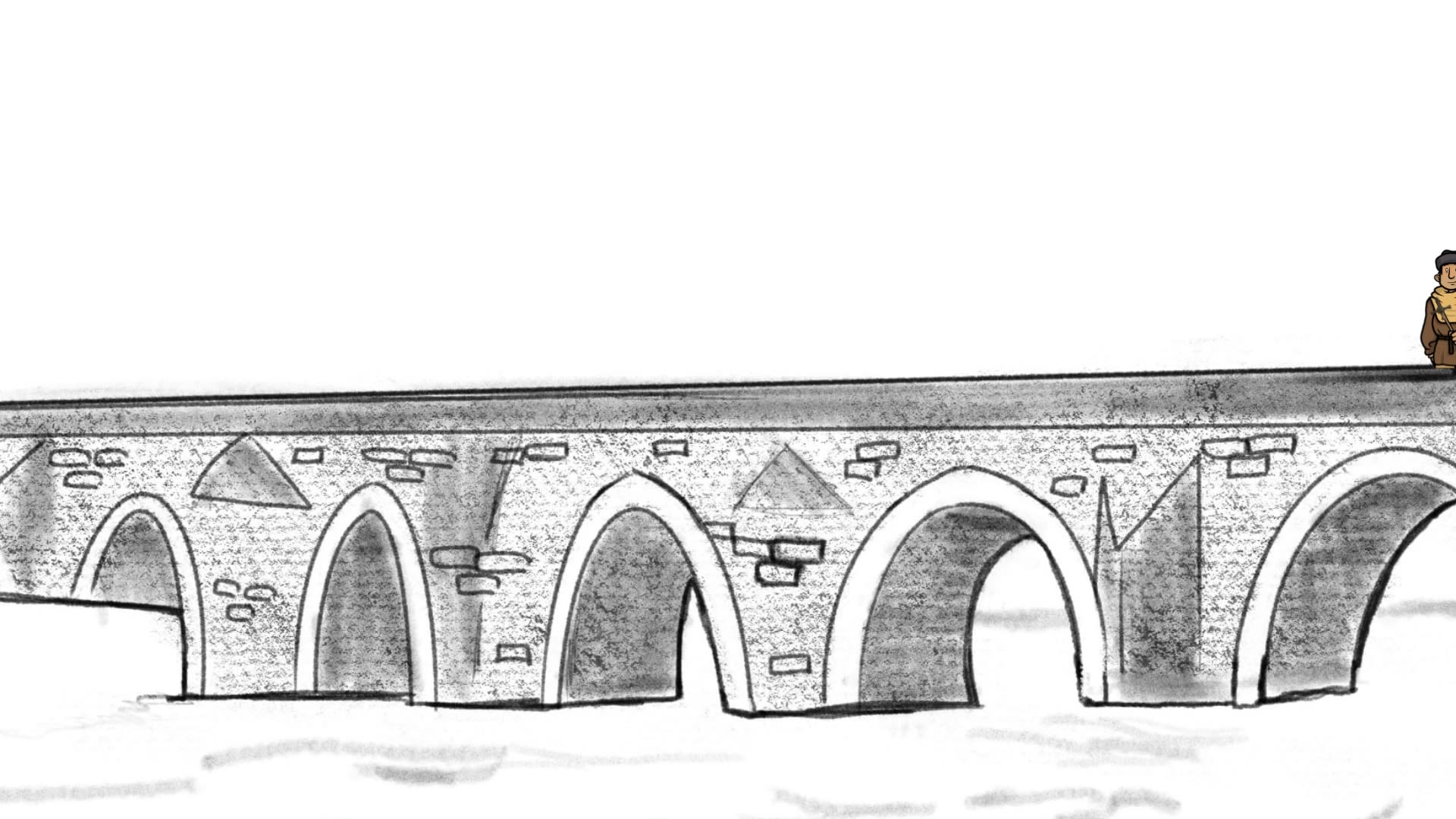
People travelling to holy places often bought pilgrim badges as souvenirs or as a way of giving thanks. Pilgrimages are still important for people to express their faith or as journeys for self-discovery.

Lead Cherub Pilgrim Badge (1400 - 1600 AD)
This lead pilgrim badge is in the shape of a cherub, which is an angelic winged creature that serves God. The pin on the back suggests this badge was worn before it was thrown or fell into the River Wear.
Lead St Cuthbert’s Cross (1300 - 1400 AD)
This lead pilgrim badge cross is similar to one later found in St Cuthbert’s tomb. St Cuthbert is the patron saint of Durham, protecting the city and the people within it. In the past, people left offerings at his shrine to ask for healing. What do you know about St Cuthbert?
This pilgrim souvenir may be linked to the shrine of St Cuthbert. This is because of its design and because it was found close to Durham Cathedral, a site of medieval pilgrimage. It might have been sold to a pilgrim crossing Elvet Bridge on their way to visit St Cuthbert’s shrine.

This cross might have been thrown into the River Wear after a pilgrimage as an offering for religious reasons. It also could have been thrown into the river by the person who bought the badge so they would have a safe trip home.


